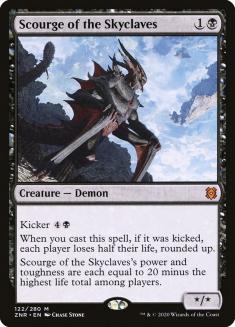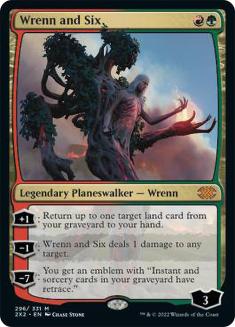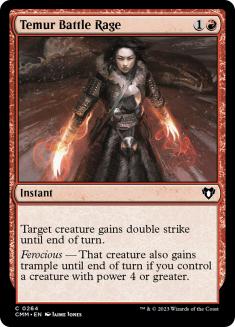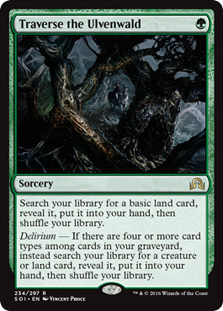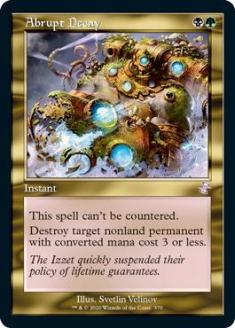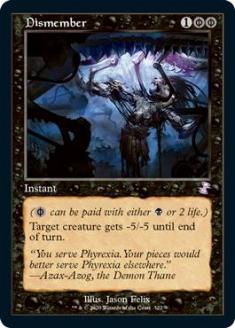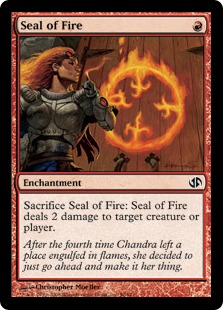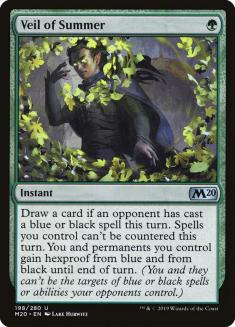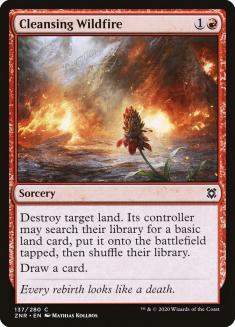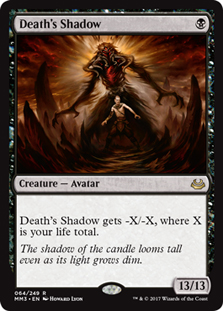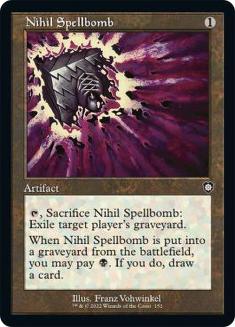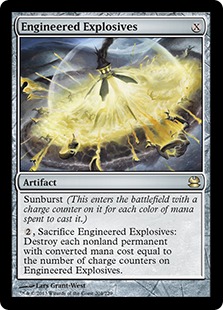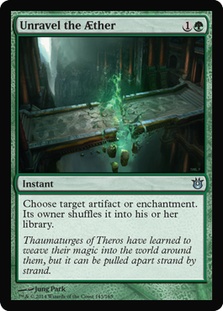As it often is, Modern is in a state of flux. As is also often typical, Modern in the macro sense is also in a transitionary period. More so than almost any other non-rotating format, Modern absorbs recently printed power outliers at the fastest rate due to its depth and excellent mana. There have been Modern formats dominated by the blinding speed of combo decks or the overpowering nature of fast mana decks, but as the number of Uros, Omnaths, and Skyclave Apparitions keeps ticking up, the games are going longer and the format is becoming more interactive on balance.
What’s my point?
Rakdos Death’s Shadow is starting to creep up in popularity since the release of Zendikar Rising, due to its new toy Scourge of the Skyclaves.
This is another potent threat that fits into the Death’s Shadow gameplan of “hurt myself and then hurt my opponent” that can often vastly outscale the original namesake Death’s Shadow.
These Rakdos Death’s Shadow decks are glorified disruptive aggro decks that play a small number of threats but with eight “premium” creatures can often end games in only a handful of turns.
Rakdos Death’s Shadow is strong, no doubt, and typically fairly well-built, but to me it doesn’t really make sense when the demands of the format become more creature-based and folks slowly but surely become more prepared to play deep games. In these scenarios, I don’t want to be scrapping with Monastery Swiftspear.
It’s time to slow down just a little bit, and in the process reimagine what Jund Midrange can be. The catalyst for this process is Wrenn and Six.
It’s also not groundbreaking news that Wrenn and Six is a powerful Magic card, but the demand for getting up pieces of cardboard is getting higher, and more so than that, the existence of Lurrus of the Dream-Den means that continuing to hit your land drops throughout the game has more value than ever.
Further, in the rare cases that your opponent isn’t cooperating with fetchlands to jump-start your Scourge of the Skyclaves, Wrenn and Six has the modest mode of going upstairs for a point.
Let’s get to the decklist:
Creatures (12)
Planeswalkers (4)
Lands (19)
Spells (25)

What Did We Lose?
Let’s look at it from a slightly different angle.
Eschewing Bomat Courier, Monastery Swiftspear, Mutagenic Growth, and (maindeck) Temur Battle Rage clearly paints us as a less aggressive deck. There will be linear matchups where you’ll miss this setup, but again, the evolution of the metagame points to opponents that are well-prepared to handle cheap aggressive threats.
What we’re really missing is Temur Battle Rage, which gives the deck a unique angle of dunking on opponents quickly or sidestepping messy battlefields full of Zombies tokens and all other manners of nonsense, and I’m missing it to the point where I’ve included it in the sideboard behind “break in case of linears” glass.
We’re touching a very small Traverse the Ulvenwald package, which I’ll get to further shortly, and this element of the deck might be missing enough that I’m interested in a singleton copy of Ghor-Clan Rampager, borrowed technology from pre-pandemic life. Anyway, the point is that I’m acknowledging there’s a cost here, but the upside of being equipped to play deeper games and picking up copies nine through twelve of creatures that can singlehandedly win the game in Tarmogoyf is a huge upside.
Despite playing Scourge of the Skyclaves, we’re really built like traditional Jund Midrange, just a much leaner approach that leverages these hard-hitting threats to close the game quickly when paired with interaction instead of slowly grinding an opponent to dust and getting over the hump with a Raging Ravine or Bloodbraid Elf. Think of Lurrus as those cards for us, except we get to play nineteen lands and we also get to sleeve up a bunch of 8/8s.
Individual Choices
There’s really nothing crazy here. This is a no-nonsense deck. The amount of “enablers” you need to play cards like Death’s Shadow and Scourge of the Skyclaves is historically overblown. The reality is that you just need some fetchlands (sometimes on both sides) and some chip shots. Wrenn and Six gives you plenty of additional ammo for hurting yourself with your lands, and Nurturing Peatland contributes to the cause as well as being a robust card advantage engine with your planeswalker.
Rakdos Death’s Shadow already proves that you don’t need Street Wraith to enable Death’s Shadow and there’s much less pressure to machine-gun down your life total to get on the battlefield than there was just a few short years ago when Grixis Death’s Shadow was the best deck in Modern.
I have seven discard spells, but I lean further and further towards eight due to how well-set-up you are to get on the battlefield on Turn 2 between your creatures and Wrenn. We are pretty unhappy if we aren’t killing a creature or casting a discard spell on the first turn, which is why we have a very light Traverse the Ulvenwald setup.
I don’t want to lean on Traverse to hit my land drops, nor for it to find my threats, but two strikes a nice balance of letting you work towards three or even four lands as you often want, as well as increasing redundancy for your twelve threats. You have so much natural incentive to play Mishra’s Bauble already between its raw rate and its synergy with Lurrus, and any game where you draw it makes turning on delirium a joke.
Abrupt Decay is another underappreciated pickup that Jund affords you. You need to be able to kill large creatures like Death’s Shadow, Scourge, and Uro, and additional coverage on permanents like Aether Vial and planeswalkers is a large boon to the deck.
Honestly, Dismember kind of sucks, but I want to have just a little bit of respect for enabling my creatures. This could easily become the fourth Fatal Push in time. Lightning Bolt is also a little bit weaker with your setup missing Monastery Swiftspear, but the amount of Skyclave Apparitions showing up means that having a bunch of ways to kill creatures is still strong. I would never shave more than one, but this is another potential candidate for Inquisition number four.
Seal of Fire sucks. Any game where you’re looping any resource with Lurrus means that you’re probably winning and this is the weakest of them. I have a split of Nihil Spellbomb and Cling to Dust as a slight nod towards “fifth piece of recursive cardboard” for the Companion, but our card quality is just so high that playing a glorified Shock is embarrassing.
The Sideboard
Veil of Summer is still incredibly strong, and it’s a welcome addition with the inclusion of green mana and gives you a pretty robust and reliable late-game of “resolve Boil” against any of the mega-greedy blue decks.
Cleansing Wildfire is something I view as a necessary evil primarily due to how effective it is against Oops All Spells. If this deck wanes in popularity or gets the axe, I don’t think it’s worth the slot.
Rounding out a few pieces of interaction I have the aforementioned copies of Temur Battle Rage. Against “Oops” or anyone trying to nonsense you, I think this is a worthy inclusion, or when your creature removal just naturally gets weaker. As a word of caution though, decks get more interactive after sideboard, not less, so this card won’t improve much on the margin — it’s just a button you can press when you really need a new angle of attack against decks that aren’t interested in participating in games of Magic with you.
Sideboarding
VS Uro Piles
Out:
In:
You still want some removal spells to kill their Uros and Omnaths, but you don’t typically want to draw more than a copy or two of them. Abrupt Decays give additional coverage against their planeswalkers, so they’re welcome here.
Your gameplan doesn’t change much after sideboarding; you just gain the additional angle of “cheese them with Boil.” The games get a lot harder to play from their side when you’re presenting pressure as well as having a pseudo-“I win” button.
VS Rakdos Death’s Shadow (Lurrus)
Out:
In:
These games are grindy and you have more big creatures so you’d prefer to take the more controlling route. Generally, you’re favored, but Scourge of the Skyclaves is more than capable of stealing a game from either side, particularly in conjunction with Temur Battle Rage.
Kill all their things and pull ahead by casting Wrenn and Six. I’m not super-confident in shaving Death’s Shadow, but drawing too many threats instead of answers can result in you playing their game, which isn’t ideal. I’m shaving a Thoughtseize since it sucks to topdeck discard in these matchups, but having a discard spell or two early in the game is important. Save one in the mid-game to snag their Lurrus!
VS Selesnya Company
Out:
In:
A similar principle to Rakdos Death’s Shadow, but on average Scourge of the Skyclaves is too difficult to keep on the battlefield due to the number of ways they can gain life. Unravel the Aether is another huge upgrade here due it being a reliable way to interact with Heliod, Sun-Crowned on the battlefield.
VS Death & Taxes
Out:
In:
A lighter version of the sideboarding against Selesnya Company. Unravel the Aether is a little less valuable, but Aether Vial is still the key to their best draws and additional interaction with Stoneforge Mystic is nice.
VS Oops All Spells
Out:
In:
Stay flexible here, as there isn’t a ton of consensus on the best build or their range of sideboarding. In case of Goblin Charbelcher, Blood Moon, or Leyline of Sanctity, consider sideboarding in Unravel the Aether, but the plan is pretty simple — keep them off-balance with discard and Cleansing Wildfire, and try to close, aided by Temur Battle Rage.
Of course these matchups are just a drop in the bucket, and as Modern continues to evolve there’s a ton of malleability for the Jund Death’s Shadow sideboard. But if you’re a fan of traditional Jund, then I highly recommend picking up this deck as we continue to see Modern shift to be more interactive.


